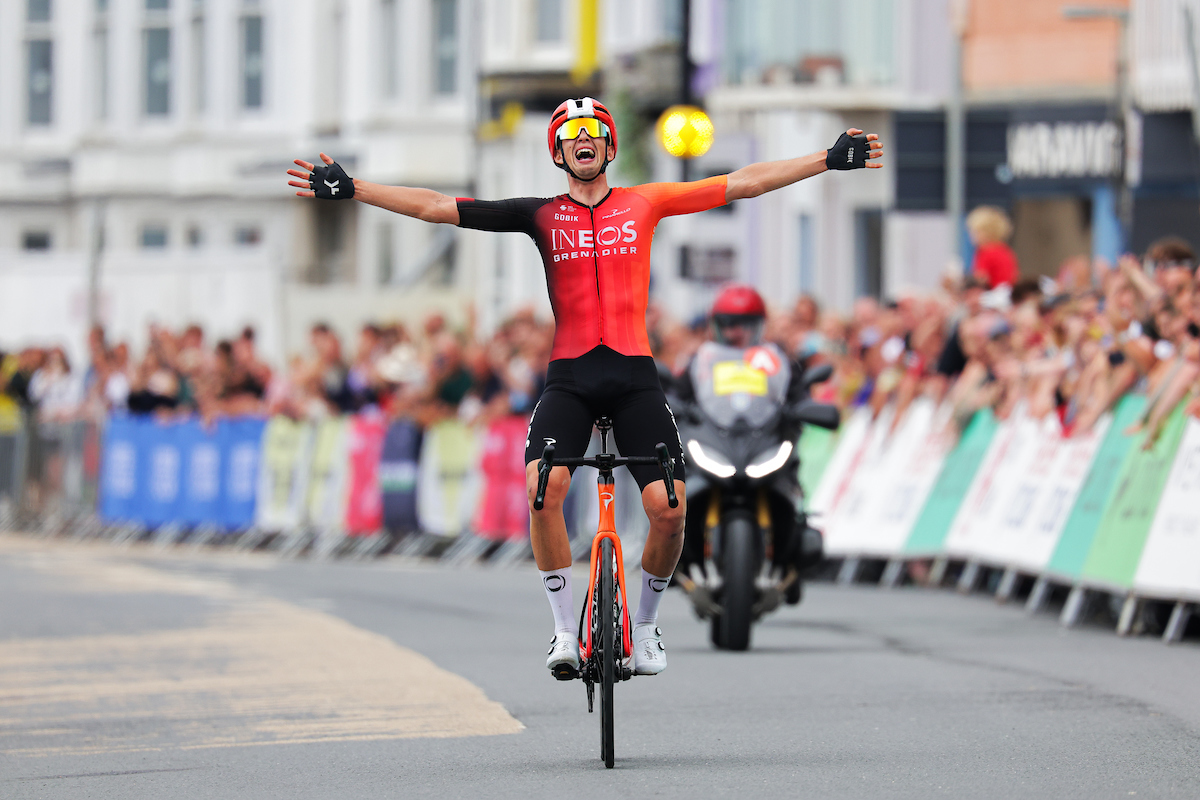Giro d’Italia 2022 – The Essential Preview
The Corsa Rosa without an outright favourite offers boundless possibilities

The stories of some editions of the Giro d’Italia are driven by character, others by plot. Last May, the essential dramatic tension was provided by winner Egan Bernal’s own narrative, as he seemed to race against his own doubts as much as against his rivals. This year, in an open race without an overwhelming favourite, it looks to be mainly about the plot. Just about anything, it seems, could happen between Budapest and Verona.
That sense of possibility is due in part to the fact that Tadej Pogačar has thus far resisted overtures from RCS Sport to test himself at the Giro. The Slovenian will surely sample – and probably win – the corsa rosa in due course, but while his absence, and that of his fellow countryman Primož Roglič, divests the Giro d'Italia of a little stardust, it does little to diminish the race as a whole.
Like in 1930, when the Giro organisation paid defending champion Alfredo Binda the winner’s purse to stay away from the event altogether, the lack of Pogačar and Roglič on the start list has the residual benefit of infusing this race with a considerable amount of suspense. We already know that the Tour will, barring incident, likely have a Slovenian winner. Just ten days out from the start in Budapest, meanwhile, the Giro picture is still altogether more hazy.
The road to victory at this race has run through Ineos in three of the past four editions, of course, and they are led here by 2019 winner Richard Carapaz. The Ecuadorian, as the best rider on arguably the strongest team, is perhaps the de facto favourite, not least because of his consistency over three weeks. When he turns up in a leadership role, he never falls shy of his own standards and that might be enough to carry him to another pink jersey in Verona, particularly when he is flanked by riders of the quality of Richie Porte and Pavel Sivakov at Ineos Grenadiers.
Carapaz, however, doesn’t carry quite the same aura as his injured and absent teammate Bernal, and his rivals will not be cowed by the team’s collective strength, particularly those with unfinished business in Italy. Simon Yates (BikeExchange-Jayco) looked to be weaving a Giro for the ages in 2018, winning three stages in pink, each more stylish than the next, only for his race to unravel dramatically on the Colle delle Finestre. He hasn’t quite managed to stitch something similar together in the years since, but he still possesses the finesse to do so.
2017 winner Tom Dumoulin (Jumbo-Visma) returns to Italy looking to rediscover himself as a Grand Tour rider after his hiatus last year. The Dutchman has raced only intermittently this season and the paucity of time trial miles is not in his favour, but he has a special relationship with this race and his endeavours will be one of the subplots to follow. So, too, will be the development of his teammate Tobias Foss, ninth a year ago.
There is even greater collective strength on show at Bahrain Victorious, where Mikel Landa is flanked by Pello Bilbao and Wout Poels, and Bora-Hansgrohe also opt for a multi-pronged approach with Wilco Kelderman, Jai Hindley and Emanuel Buchmann. UAE Team Emirates, meanwhile, are backing João Almeida, who holds justifiably lofty ambitions after his sparkling debut in 2020.
Romain Bardet (DSM) returns to the Giro after placing seventh on his own debut a year ago, when he seemed liberated by racing outside the white heat of July, and Tour of the Alps victory highlights his form. His young teammate Thymen Arensman is a rider of considerable potential. Miguel Ángel López (Astana-Qazaqstan), a stage winner in Austria, might never have a better chance to win a Grand Tour considering the dearth of time trialling. Hugh Carthy (EF Education-EasyPost) will set out with similar motivation. Guillaume Martin (Cofidis) tends to enjoy racing in Italy and should relish his Giro bow.
At 42, Alejandro Valverde’s (Movistar) Grand Tour-contending days are surely behind him, yet the terrible beauty of this most open Giro is that few will feel beaten before the race begins. It will be fascinating, too, to see how Vincenzo Nibali fares in what looks destined to be his final appearance. A third victory is beyond him, but a valedictory cameo from the Astana Qazaqstan rider can be expected all the same. Home hopes will instead be led by his former teammate Giulio Ciccone (Trek-Segafredo), eager to make amends after a crash ended his podium challenge last year.
Every contender, it seems, has a compelling back story, and the dramatic arcs are not limited to the GC men. Mathieu van der Poel (Alpecin-Fenix) and Biniam Girmay (Intermarché-Wanty-Gobert) will be among those chasing the first maglia rosa of the race, while Mark Cavendish returns to the Giro after a nine-year hiatus, frustrated at his place in the QuickStep-AlphaVinyl depth chart yet still hoping to earn himself a shot at history in July. His presence, along with Caleb Ewan (Lotto Soudal), Arnaud Démare (Groupama-FDJ) and Fernando Gaviria (UAE Team Emirates), could lend each bunch sprint an almost operatic intensity.
No, this year’s epic doesn’t have one dominant figure, at least from the outset, but therein lies a large part of its intrigue. 184 riders set out from Budapest eager to make the race, but mindful, too, that this race can make them. A Giro of seemingly boundless possibilities awaits.
The Giro d'Italia 2022 Route

Statistics only reveal so much about a Grand Tour – the proof is in the racing, after all – but one figure stood out when the needlessly protracted Giro route presentation was completed last November: the 26.3km against the watch on this year’s course is the lowest amount in any Giro since 1963, when Franco Balmamion claimed victory in a race without any time trials at all.
That curiosity, allied to the 51,000 metres of total altitude gain across the three weeks, suggests a race tilted firmly in favour of the climbers. A closer inspection, however, shows that this Giro is not quite as brutally straightforward as that either.
As per tradition, the third week features some mammoth mountain days, but the Giro’s climbing metres are well distributed across the three weeks – and in some unexpected places, too, such as the circuit in the hinterland of Naples on stage 8. And, all the while, the vagaries of May weather, not to mention a peloton without an obvious padrone, could conspire to produce plot twists all along the peninsula.
Read our complete stage-by-stage route guide
Act 1: Hungary and the South






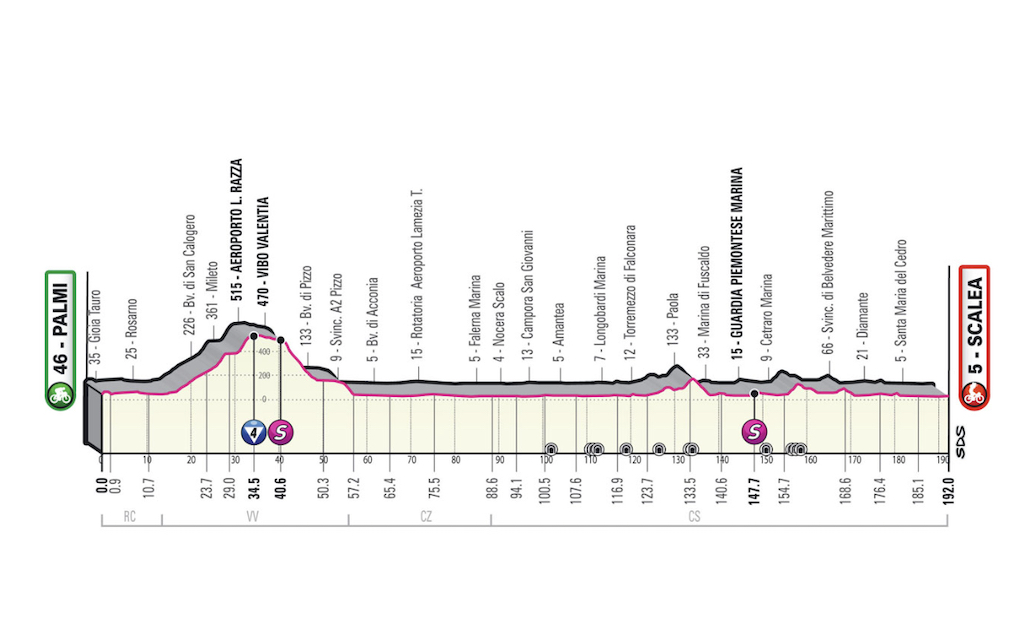

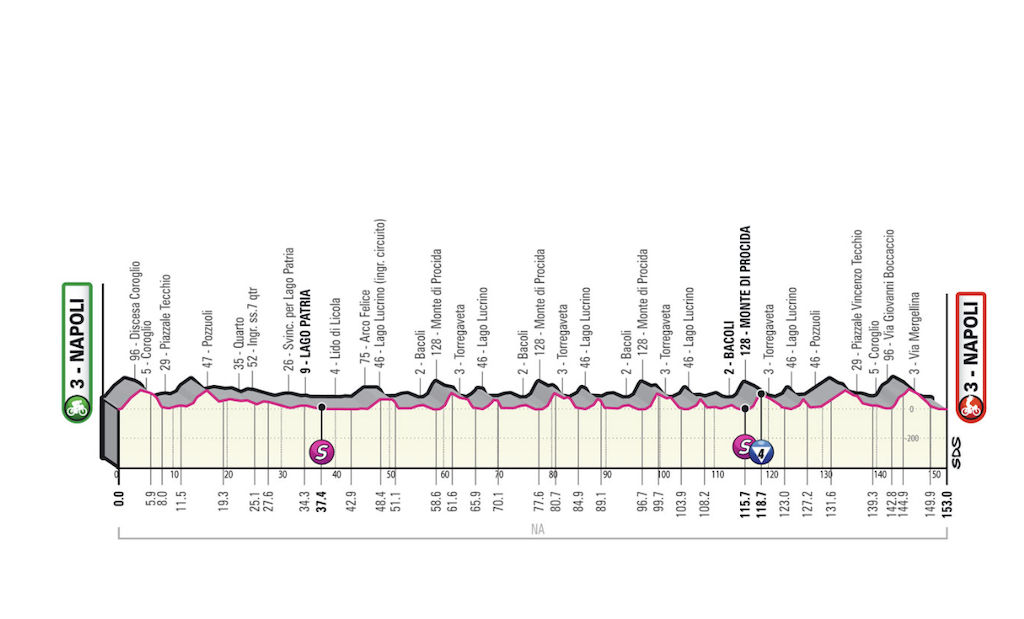
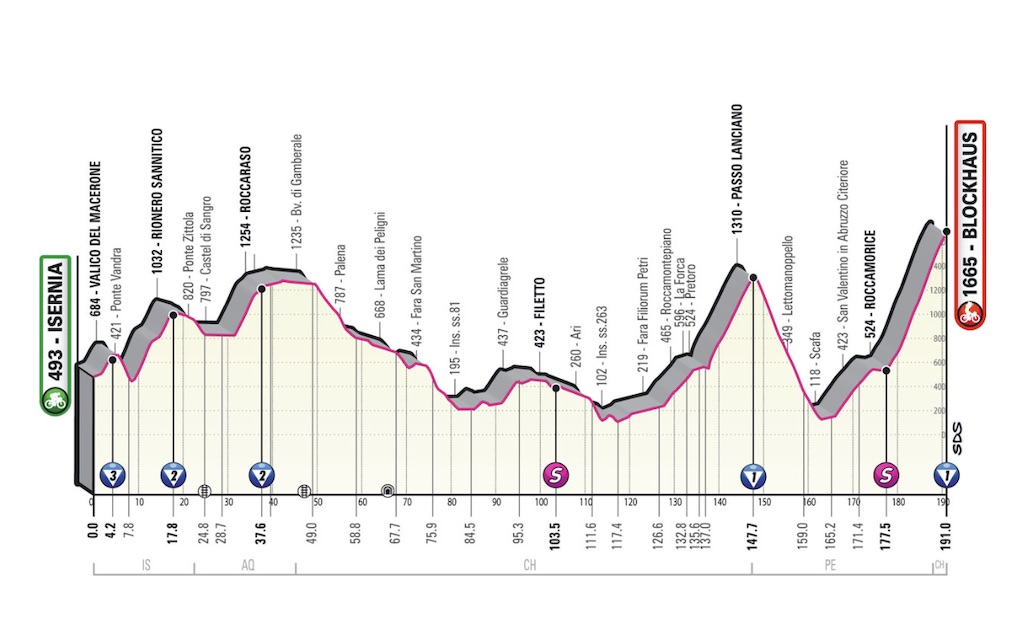
Two years later than planned, the Giro sets out from Hungary, and the race begins with an uphill finale in Visegràd that seems to favour finisseurs rather than pure sprinters. 24 hours later, the GC contenders face their first examination in Budapest with a 9.2km time trial across the chattering Danube towards another hilltop finale. The time gaps won’t be enormous but they will be informative.
The Hungarian expedition concludes on the shores of Lake Balaton with an outing for the sprinters before the Giro caravan takes an early rest day for the long transfer south to Sicily. The island was once a rarity on the Giro route, but this is the race’s fourth visit to Sicily in six years, and there is the seemingly obligatory summit finish atop Mount Etna, which offers a slight variation by blending the approaches of 2011 and 2018.
The second day in Sicily brings the race to Messina, which serves as both a sort of homecoming and a sort of farewell for Vincenzo Nibali. The sprinters should be to the fore here, as they will be across the strait the following day, when the race snakes up the Calabrian coast to Scalea on stage 6, but the terrain grows rather more rugged for the remainder of the Giro’s foray through the deep south.
Stage 7 to Potenza is one of the most deceptively difficult of the entire race, with the climbs of the Passo Colla, Monte Sirino – a favoured finish in the 1990s – Monte Scuro and La Sellata preceding a hilly finale in Potenza. Any undercooked or unprepared contenders could pay a heavy price here.
A day later, the Giro returns to Naples for the first time in nine years, for a brief but potentially explosive stage. The 153km leg starts and finish on the seafront, though the key action will come in the volcanic Campi Flegrei to the west of the city, with the race taking in five laps over the short but tricky Monte di Procida.
The opening weeks draws to a close in Abruzzo, where another 5,000 metres or so of climbing are packed into 191km. The climbs of Rionero Sannitico, Roccaraso and the Passo Lanciano precede the demanding finale on the Blockhaus, which is tackled from the same Roccamorice approach that made its memorable debut in 2017.
Act 2: Improvisation welcome

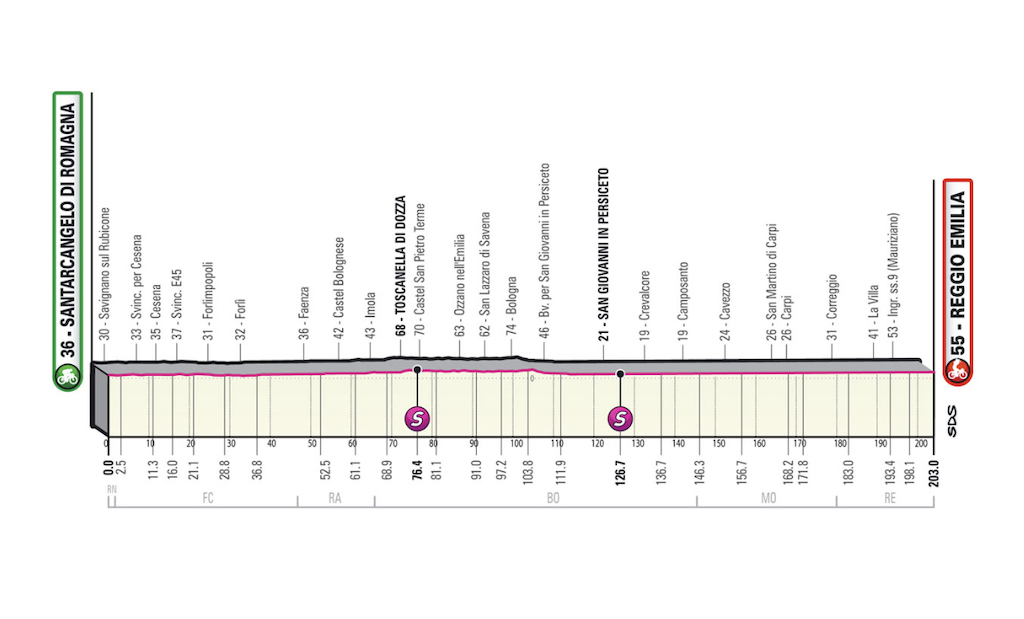



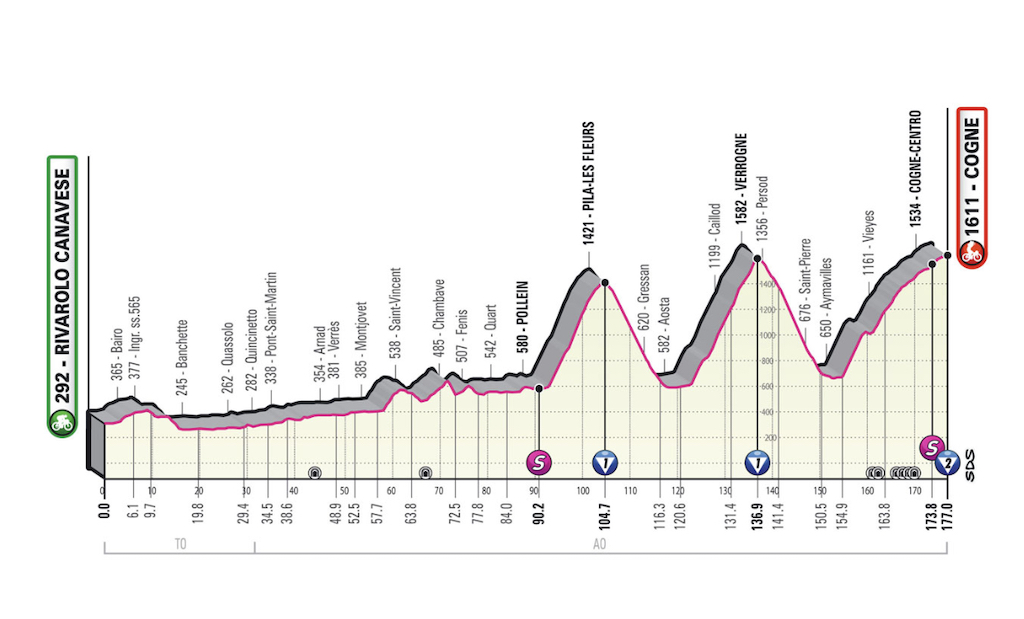
Not for the first time, context is everything in the second week of the Giro. In theory, the succession of long and hilly stages invites attacks from inventive general classification contenders, but this phase of the race could just as easily see a series of early breakaways going the distance.
No matter, stage 10 from Pescara to Jesi will call for vigilance, given that it comes immediately after a rest day. After a flat opening, the terrain becomes more rugged in the second half, including the ascent to Recanati, birthplace of the poet Giacomo Leopardi, and a passage through Filottrano, home of the late Michele Scarponi.
The sprinters will be to the fore at Reggio Emilia and Cuneo, but those opportunities are split by a day for puncheurs to Genoa on stage 11. The route features the Passo del Bocco, where Wouter Weylandt tragically lost his life on the 2011 Giro, while the Valico di Trensasco precedes the drop towards the finish.
The Giro’s third weekend, meanwhile, begins with an intriguing stage around Turin, where the gruppo takes in two laps over the Colle della Maddalena and Superga before a finish on the banks of the Po. A day later, the race heads into the Alps for a taste of what is to follow in the final week. The category 1 ascents of Le Fleurs and Verrogne precede a summit finish at Cogne in the Gran Paradiso National Park. The gradients may not be the stiffest, but some 46km of the final 80km will be uphill and the sheer volume of climbing will weigh on the legs.
Act 3: The grand finale






The Giro resumes after its final rest day with one of its most arduous stages. A trio of category 1 ascents punctuate stage 16, with the Goletto di Cadino and the Mortirolo preceding the stiff final climb of Santa Cristina and the drop to the finish in Aprica. The Mortirolo is climbed from its ‘gentler’ Edolo approach, but there is nothing mild about this stage, which totals 5,540m of climbing. The Santa Cristina was the scene of Marco Pantani’s dismissal of Miguel Indurain on the 1994 Giro and, inevitably, it has been branded as the ‘Montagna Pantani’ on the 2022 route.
Another day in the high mountains follows on stage 17, which takes in the Passo del Tonale and Passo del Vetriolo before the steep, hair-pinned Salita del Menador, which brings the race up the Kaiserjägerweg, the road laid out by Austro-Hungarian troops during the First World War. An undulating, 8km plateau over the top serves as an epilogue before the finish in Lavarone.
There is some respite on stage 18, with a largely flat run to Treviso, but stage 19, which toggles between Friuli and Slovenia, is testing, with the category 1 ascent of Monte Kolovrat, which climbs for 10km at almost 10 per cent, and the uphill finish at Castelmonte.
The tappone of the Giro, however, is reserved for the final weekend, when the race crosses above 2,000m in altitude for the first time. The Passo San Pellegrino is followed by the Cima Coppi, the highest point of this Giro, the 2,239m-high Passo Pordoi. The finish, meanwhile, is on the fearsome Passo Fedaia, where the notoriously steep and straight section at Malga Ciapela could turn the Giro on its head right at the last, beneath the striking precipice of the Marmolada.
The 17km time trial in Verona on the final day, meanwhile, could be a mere epilogue or it could prove decisive. The Roman Arena has hosted finales both dramatic and banal over the years, but whatever the tone of the day, a place in history awaits the maglia rosa.

The latest race content, interviews, features, reviews and expert buying guides, direct to your inbox!

Barry Ryan was Head of Features at Cyclingnews. He has covered professional cycling since 2010, reporting from the Tour de France, Giro d’Italia and events from Argentina to Japan. His writing has appeared in The Independent, Procycling and Cycling Plus. He is the author of The Ascent: Sean Kelly, Stephen Roche and the Rise of Irish Cycling’s Golden Generation, published by Gill Books.
Latest on Cyclingnews
-
Canadian National Championships: Alison Jackson powers to solo road race victory
Alexandra Volstad takes field sprint for second ahead of Laury Milette -
British Road National Championships: Sam Watson solos to victory in elite men's road race
Matthew Brennan takes second in field sprint ahead of Ethan Vernon -
Spanish Road Championships: Iván Romeo continues stellar run of form to take solo road race victory
Fernando Barceló second, Roger Adrià third in Granada -
2025 Road National Champions index
Elite men and women who won their national road championships titles in road race and individual time trial

